Elephants are common in Kerala. The elephant is the state animal and appears on the emblem of the government of Kerala. Elephants are an integral part of the state’s culture and are a feature of the grandest festivals of Kerala. Some of the elephants have even gone on to become superstars and have achieved celebrity status here.
However, that's not the only way in which elephants are employed here. Unfortunately, most of the seven to nine hundred and odd domesticated elephants in Kerala live a life of hard forced labour.
Having written about lumberjacks in my last post, I thought it only fair to cover another side to the lumbering industry in Kerala. This time the lumberjack in question is a four legged one.
As mentioned in my previous post, the rubber estates are crammed for space with rubber saplings or trees planted at even distance from each other. When a tree needs to be felled and transported from within this limited space, there is little heavy machinery can do without causing collateral damage. There is a need for something strong but manoeuvrable to do this kind of specialised work and that's where elephants fit in.
It is surprising what kinds of weight an elephant can shift, or rather, are made to shift. An average elephant weighs about 3000 – 5000 Kg, and is about 3 m tall. An elephant is reported to match the strength of 80 men and has a brain 4 times the size of a human. With so much strength and mental capacity, I wonder why such a magnificent creature is still a slave to humans. Unfortunately, an elephant doesn't know its own strength!
As you can see from the picture above, an elephant does its master’s bidding not out of love and devotion, but out of fear and intimidation. Brute force and evil human intelligence is used to subjugate an elephant.
A domestic elephant usually has 3 mahouts, also called as Papaans. The papaans control the elephant with simple tools. His tools consists of the Thotti - a barbed hook, 3.5 feet in length and 3 inches thick; the valiya kol (long pole), 10.5 feet in length and 5.5 inches in thickness; and cheru kol (short pole).
The thotti is used to prod and stab the elephant, a common method used in training the elephant and making it fear its trainer. The Kols are used to beat it and make it obey the mahout’s wishes. In addition to this, there is also the ever present chain which is tied around its body and on its feet. The elephant is made to carry this as it walks.
This chain is used to tether the animal to a tree, should it be angered and the mahout lose control. It is mostly females which are made to work as males develop a periodical hormone surge called as “Musth”, during which they are extremely aggressive and difficult to control.
However, the mahouts believe that the best way to deal with this phenomena is to starve the elephants and weaken it through torture. It is thought that such acts reduce the duration of its Musth.
If an elephant is too old to work, it is often sent out to work in the tourist industry, for elephant rides and as festival display props. All this potential revenue makes owning an elephant a lucrative deal. A sad life it is indeed for the working elephant.
However, the domestic elephant is legally protected by law and there are a set of guidelines (THE KERALA CAPTIVE ELEPHANTS (Management and Maintenance) RULES, 2003) that have to be followed to ensure the well being of the pachyderm. This includes everything from the permissible workload to conditions for its transport, maintenance and even giving it a bath everyday! Whether these rules are strictly enforced is questionable.
In the past ages, elephants were considered to be a sign of wealth and prestige and was owned only by landlords. These people had enough wealth to ensure the well being of the animals. The Papaans of yesteryears cared for their animals, respected and understood them. In fact, there even existed a branch of ayurveda, dealing exclusively with the treatment of elephants (Hasthyaayurvedam). All trainers and mahouts were required to be knowledgeable in this science.
However, in today’s world, all that has changed. Papaans today are unqualified and have little understanding of elephants. Moreover, a lot of them are drunks and addicts. It is the Papaan’s themselves who ill-treat the animal the most. It is sad indeed to see such a dignified creature, one that has no natural predators or challengers, being treated so badly today as just another commercial investment to achieve man’s selfish needs. The elephants are very much a symbol of Kerala and I don't wish for that to change, however, I do wish that the elephant is given its due dignity and respect and the mahouts give it the compassion and caring that was once the hallmark of their predecessors….and oh yes, please let us leave lumbering to the real lumberjacks!
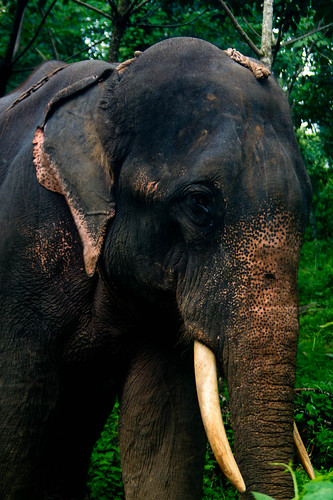
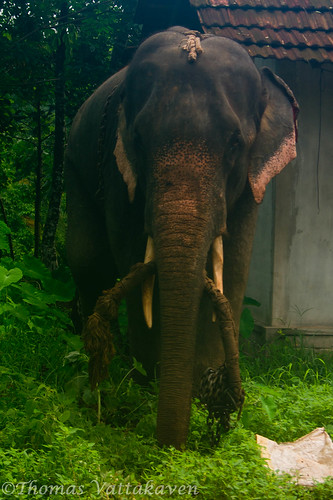

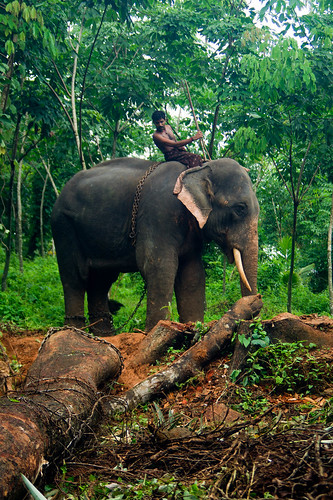
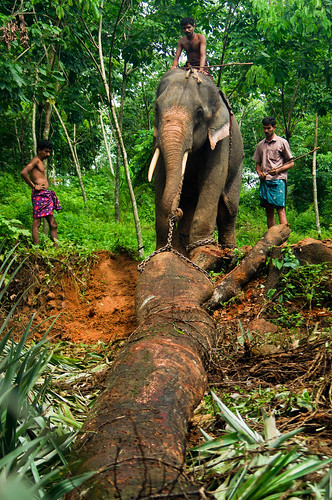
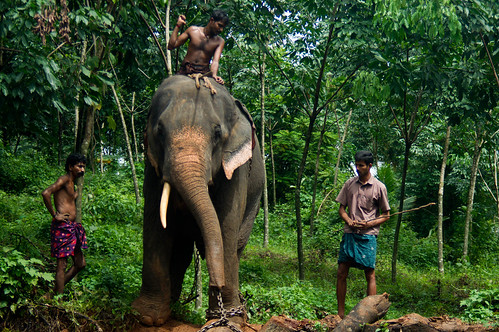
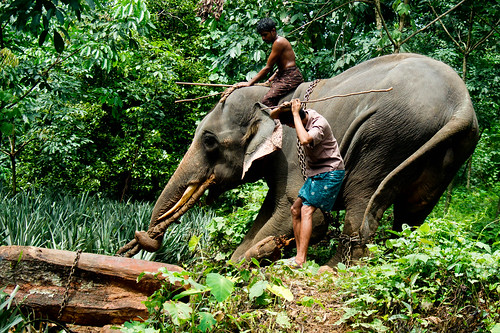
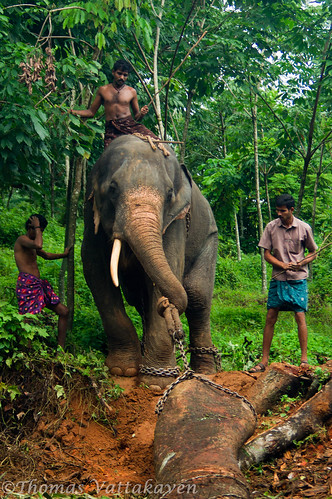
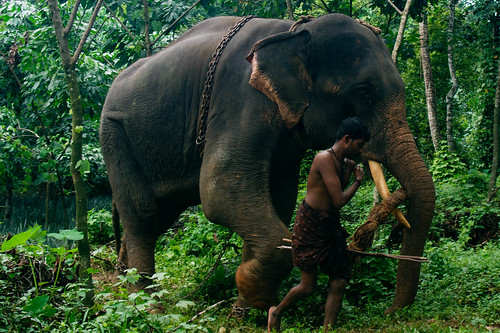
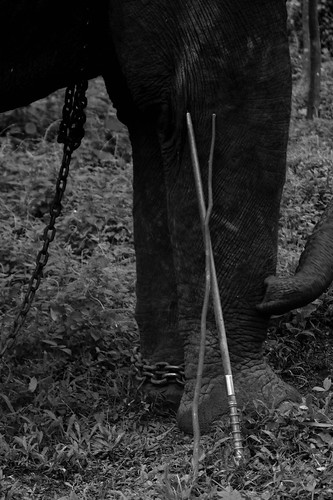
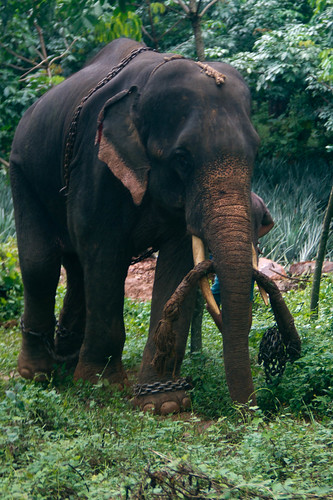
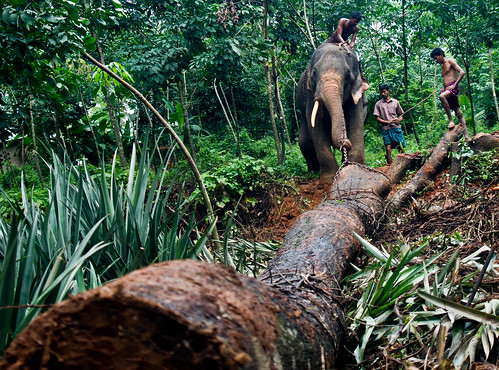
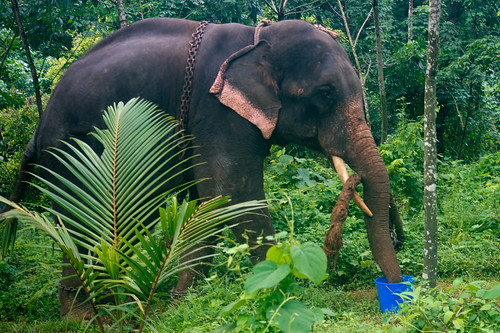
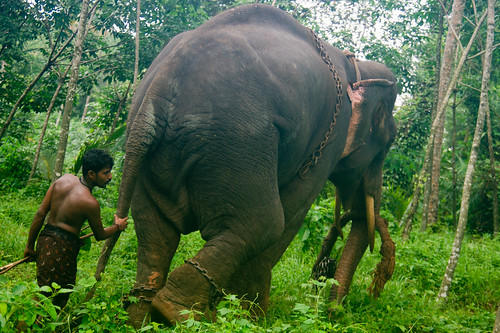
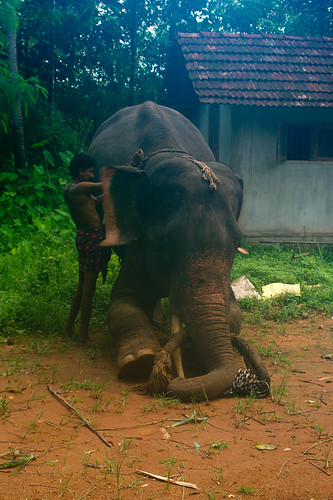
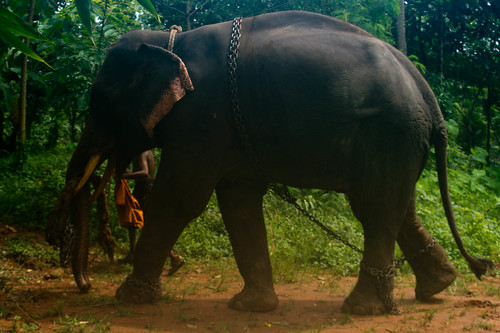
Neat post with lovely images, I particularly like the way you have composed these images...Thomas
ReplyDeleteThis post was not only informative but also moving.... wish i could do something about it.
ReplyDelete